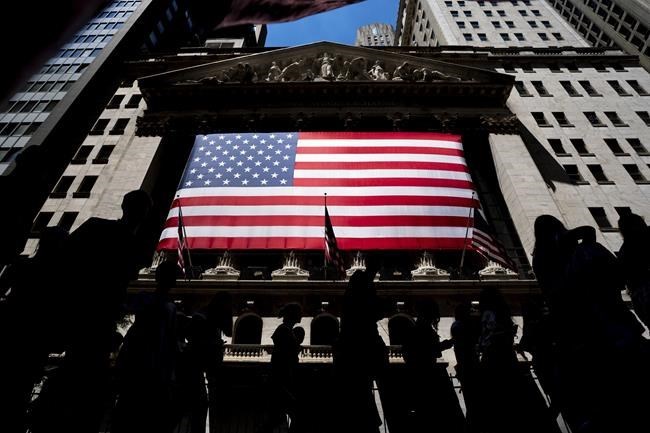NEW YORK — Major stock indexes shook off an early slump and ended with meager gains on Wall Street Tuesday as worries about the economy continue to weigh on markets. Oil prices slumped, bringing the price of U.S. crude back below $100 a barrel for the first time since early May. Tech stocks staged a turnaround and ended higher. The S&P 500 eked out a gain of 0.2% and the tech-heavy Nasdaq rose 1.7%. The Dow Jones Industrial Average remained in the red, losing 0.4%. The yield on the 10-year Treasury note, which helps set mortgage rates, fell to 2.82%.
THIS IS A BREAKING NEWS UPDATE. AP’s earlier story follows below.
Stocks fell broadly on Wall Street in afternoon trading Tuesday, extending a slump for the major indexes as investors continue to worry about the state of the economy.
The S&P 500 fell 0.9% as of 2:06 p.m. Eastern. Roughly 75% of stocks in the benchmark index fell in the weak opening following a long weekend for the Independence Day holiday. The Dow Jones Industrial Average fell 437 points, or 1.4%, to 30,660, while the Nasdaq recovered from an early slide and was 0.5% higher.
Small-company stocks also fell. The Russell 2000 shed 0.7%.
Energy companies had some of the biggest losses as the price of U.S. crude oil slumped 9.1%. Exxon Mobil fell 4.5% and Hess dropped 8.2%.
Banks also fell significantly, along with bond yields. The yield on the 10-year Treasury, which helps set mortgage rates, fell to 2.80% from 2.90% late Friday. JPMorgan Chase was down 1.4%.
Health care stocks also weighed on the market. UnitedHealth fell 3.9%.
European markets fell broadly.
Stocks remain in a slump that pulled the S&P 500 into a bear market last month, meaning an extended decline of 20% or more from a recent peak. The market's performance in the first half of 2022 was the worst since the first six months of 1970.
Inflation has been squeezing businesses and consumers throughout the year, but tightened its grip after Russia invaded Ukraine in February. The invasion sent oil prices higher globally and sent gasoline prices in the U.S. to record highs. That prompted a pullback in spending from consumers struggling with higher prices on everything from food to clothing.
Lockdowns in China from rising COVID-19 cases have also made supply chain problems worse.
Central banks have been raising interest rates in an attempt to temper inflation. The Federal Reserve has been aggressive in its shift from historically low interest rates at the height of the pandemic to unusually big rate increases. But, that has raised concerns that the central bank could go too far in raising rates and hitting the brakes too hard on economic growth, which could bring on a recession.
Wall Street has been closely watching the latest economic updates for more clues on how inflation is impacting the economy and whether that could shift the Fed's position on rate hikes. Wall Street will get a closer look at the employment market on Friday when the the government releases employment data for June.
Investors are also looking ahead to the next round of corporate earnings for a clearer picture of inflation's impact. Several big companies recently warned that their financial results are being squeezed by inflation, including spice and seasonings maker McCormick.
Damian J. Troise And Alex Veiga, The Associated Press



